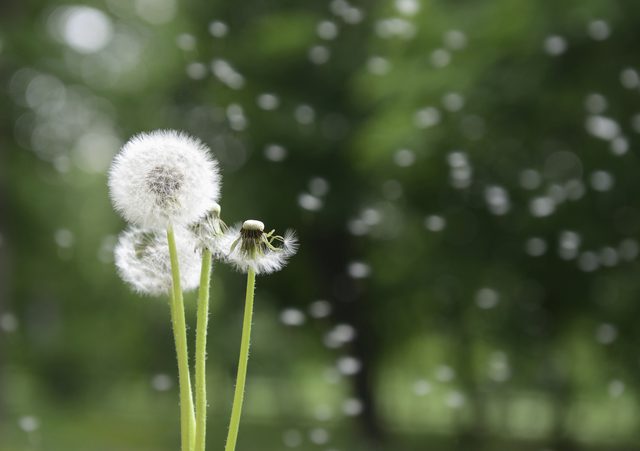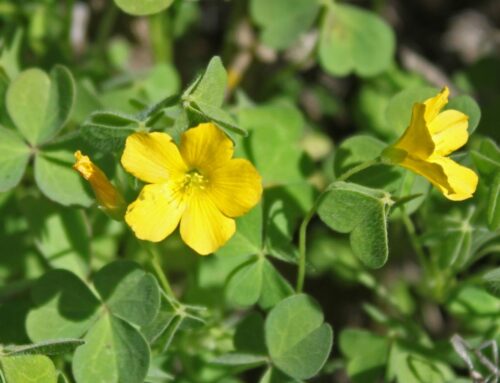Published in the January 31 – February 13, 2018 issue of Morgan Hill Life

The bane of lawns in Morgan Hill and Gilroy and just about everywhere else, the common dandelion (Taraxacum officinale) was brought to North America in the 1600s to be used as both food and medicine. While no research has verified any medical uses for dandelion, they do have a good side. Really!
Dandelion plants
Cousin to lettuce and chicory, dandelions are easy to recognize, with their basal rosette of toothed leaves and bright yellow or orange composite flowers. Dandelions attract many beneficial pollinators looking for nectar and pollen, but they do not need to be pollinated to set seed.
Once a dandelion flower has matured and withered, the seed ball emerges. Commonly called blowballs or clocks, the seeds are actually a type of fruit, called a cypsela. The feathery bristles that helicopter seeds to new locations are called pappi. A dandelion’s hollow stem contains bitter latex used to defend against herbivores.
Dandelion latex
Latex is used to make rubber. While most of the latex used to make rubber today comes from the rubber tree (Hevea brasiliensis), you can make rubber from dandelion latex. If you coat your finger with dandelion latex, allow it to dry, and then roll it off your finger, you can make an elastic band. You can also make a bouncing ball out of dandelion latex.
The latex produced by a particular Russian dandelion is so strong that it is being researched as a source of rubber for automobile tires.
Dandelions as food
All parts of the dandelion plant are edible. Harvest the newest leaves before it goes to flower to avoid some of the plant’s bitterness. Eaten the same way as spinach, dandelion greens are packed with high levels of vitamins A, B, C, and D, iron, calcium, potassium, and zinc.
Young dandelion roots can be peeled and eaten. They are said to taste like turnips. The roots can also be roasted and used as a coffee substitute. Flowers can be sautéed in oil with a little garlic or used to make dandelion wine.
Dandelion roots
These herbaceous perennials have taproots that are strong enough to counteract compacted soil. They can even break through asphalt.
While dandelion roots are typically only six to 18 inches deep, some specimens go 10 to 15 feet deep. Dandelion plants can live for up to 10 years and reach 20 inches in diameter.
Dandelion control
If you really must get rid of the dandelions in your Morgan Hill lawn, it will take consistent effort. Dandelion seeds can blow in on the wind from miles away. This battle never ends. While herbicides kill individual dandelions, those same chemicals can be toxic to other living things, such as people and pets. Crabgrass pre-emergent herbicides advertised as effective against dandelions do not prevent dandelion seeds from germinating.
Maintaining a healthy lawn and removing plants as soon as they are seen is the best control method, but you must be diligent in your efforts. Love ‘em or hate ‘em, dandelions have been around for 30 million years — and they are here to stay.
You can learn more about South Valley weeds at the South County Teaching and Demo Garden, found at St. Louise Hospital, 9400 No Name Uno, in Gilroy.
You can learn more at www.mgsantaclara.ucanr.edu/demonstration-gardens/south-county-teaching-and-demonstration-garden. Classes taught by gardening experts are regularly offered to the public. For more information, check our events page at www.mgsantaclara.ucanr.edu/events/ or call (408) 282-3105 between 9:30 a.m. and 12:30 p.m., Monday through Friday.




